Papers by Mzia Kutateladze
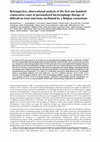
In contrast to the many reports of successful cases of personalized bacteriophage therapy, random... more In contrast to the many reports of successful cases of personalized bacteriophage therapy, randomized controlled trials of non-personalized bacteriophage products did not bring the expected results. Here, we present the outcomes of a retrospective, observational analysis of the first 100 consecutive cases of personalized bacteriophage therapy of difficult-to-treat infections facilitated by a Belgian consortium. The most common indications were lower respiratory tract, skin & soft tissue, and bone infections, and involved combinations of 26 bacteriophages, individually selected and sometimes pre-adapted to target the causative bacterial pathogens. Clinical improvement and eradication of the targeted bacteria were reported for 77.2% and 61.3% of infections, respectively. Eradication was 70% less probable when no concomitant antibiotics were used (odds-ratio = 0.3; 95% confidence interval = 0.127–0.749). In vivo selection of bacteriophage resistance and in vitro bacteriophage-antibioti...
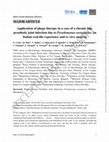
Open Forum Infectious Diseases
BackgroundProsthetic joint infection (PJI) caused by Pseudomonas aeruginosa represents a severe c... more BackgroundProsthetic joint infection (PJI) caused by Pseudomonas aeruginosa represents a severe complication in orthopedic surgery. We report the case of a patient with chronic PJI from P. aeruginosa successfully treated with personalized phage therapy (PT) in combination with meropenem.MethodsA 62-year-old woman was affected by a chronic right hip prosthesis infection caused by P. aeruginosa since 2016 . The patient was treated with phage Pa53 (I day 10 mL q8h, then 5 mL q8h via joint drainage for 2 weeks) in association with meropenem (2gr q12h iv) after a surgical procedure. A 2-year clinical follow up was performed. An in vitro bactericidal assay of the phage alone and in combination with meropenem against a 24-hour-old biofilm of bacterial isolate was also carried out.ResultsNo severe adverse events were observed during PT. Two years after suspension, there were no clinical signs of infection relapse, and a marked leukocyte scan showed no pathological uptake areas. In vitro stu...

WikiJournal of Medicine
Phage therapy refers to the use of bacteriophages (phages - bacterial viruses) as therapeutic age... more Phage therapy refers to the use of bacteriophages (phages - bacterial viruses) as therapeutic agents against infectious bacterial diseases. This therapeutic approach emerged in the beginning of the 20th century but was progressively replaced by the use of antibiotics in most parts of the world after the second world war. More recently however, the alarming rise of multidrug-resistant bacteria and the consequent need for antibiotic alternatives has renewed interest in phages as antimicrobial agents. Several scientific, technological and regulatory advances have supported the credibility of a second revolution in phage therapy. Nevertheless, phage therapy still faces many challenges that include: i) the need to increase phage collections from reference phage banks; ii) the development of efficient phage screening methods for the fast identification of the therapeutic phage(s); iii) the establishment of efficient phage therapy strategies to tackle infectious biofilms; iv) the validatio...
Clinical Microbiology and Infection
PHAGE
To investigate the potential role of bacteriophages in the treatment of surgical infections, we c... more To investigate the potential role of bacteriophages in the treatment of surgical infections, we conducted a retrospective analysis of four surgical patients who have sought treatment at the Eliava ...

Applied Biochemistry and Microbiology, 2015
The sensitivity of 512 newly isolated Pseudomonas aeruginosa clinical strains to six classes of a... more The sensitivity of 512 newly isolated Pseudomonas aeruginosa clinical strains to six classes of antimicrobial preparations has been studied. Antibiotic-resistant strains were selected and genotyped. Three new virulent bacteriophages of the families Myoviridae and Podoviridae were isolated against these strains. The parameters of the intracellular phage development cycle were established, and the influence of inactivating factors (temperature, pH, and UV exposure) on phage viability was studied. The molecular weight of the phage genome was determined. Phage DNA restriction analysis and structural protein composition analysis by SDS polyacrylamide gel electrophoresis were carried out. The plating efficacy of phages on 28 genetically distant antibiotic-resistant P. aeruginosa strains was studied. It was established that 26 of them were lysed by phages with a high efficacy. The range of antibacterial action of the studied phages and their mixtures on 427 multidrug-resistant clinical isolates was assessed. It is shown that including these phages in one multicomponent preparation enhanced their lytic activity.
International Journal of Infectious Diseases, 2012
Japanese Society for Bacteriology, Mar 9, 2021
Journal of Bacteriology & Parasitology, Jan 15, 2014
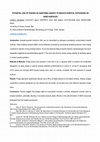
Introduction: Hospital-acquired infections (HAI) can be transmitted by pathogens persistently con... more Introduction: Hospital-acquired infections (HAI) can be transmitted by pathogens persistently contaminating hospital surfaces,1 often multidrug-resistant (MDR), and not efficiently controlled by conventional sanitation protocols, which indeed contribute to selection of drug-resistant strains.2 Due to the selective killing of specific bacteria, bacteriophages have been repeatedly suggested as decontaminating agents.3,4 This work was aimed to assess phage usability as sanitizing agents in routine hospital sanitation. Materials & Methods: Phage activity was assessed in vitro and in situ, in aqueous buffer or probiotic eco-sustainable detergents,5 on glass, plastic or ceramic surfaces artificially contaminated by S. aureus, E. coli and P. aeruginosa. Both ATCC strains and wild-type MDR hospital isolates were used, at a density consistent with what detected on hospital surfaces. Results: Phage application significantly reduced (up to 90%) all tested bacteria on all treated surfaces. Nota...
Biotechnology Journal, 2016
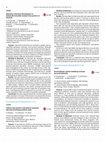
International Journal of Infectious Diseases, 2016
Purpose: Salmonella Enteritidis has emerged as global concern regarding quinolone resistance and ... more Purpose: Salmonella Enteritidis has emerged as global concern regarding quinolone resistance and invasive potential. Although quinolone-resistant S. Enteritidis has been observed with high frequency in Thailand, information on the mechanism of resistance acquisition is limited. This study aimed to investigate the quinolone resistance determinants in clinical nalidixic acid (NAL) resistant S. Enteritidis isolates collected nationwide in Thailand. Methods & Materials: To elucidate the quinolone resistance mechanism, a total of 190 clinical isolates of NAL-resistant S. Enteritidis were collected throughout Thailand, and the quinolone resistance-determining region (QRDR) mutational status and the plasmid-mediated quinolone resistance (PMQR) determinants were investigated in the context of resistance levels to NAL, norfloxacin (NOR) and ciprofloxacin (CIP). In addition, the relationship between these resistance determinants and multi-locus variable number of tandem repeat analysis (MLVA) was to elucidate the dissemination of specific clones. Results: The most commonly affected codon in gyrA was 87, followed by 83. Double codon mutation in gyrA was found in an isolate with high-level resistance to NAL, NOR and CIP. A new mutation causing serine to isoleucine substitution at codon 83 was identified in eight isolates. Eighteen qnrS1-carrying isolates showing nontypical quinolone resistance. One isolate carrying both the qnrS1 gene and a gyrA mutation showed a high level of quinolone resistance. Genotyping by MLVA suggested the presence of a possible clonal expansion of NAL-resistant S. Enteritidis nationwide. Conclusion: Our data suggested that NAL-resistant isolates with single quinolone resistance determinant may potentially become fluoroquinolone resistant by acquiring secondary determinants.
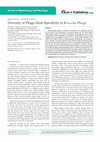
Journal of Bacteriology and Mycology, 2017
Bacteriophage typing of Brucella is accepted as an additional tool that can be used for the ident... more Bacteriophage typing of Brucella is accepted as an additional tool that can be used for the identification of bacterial species by the World Health Organization's Expert Committee of Brucellosis. Phage typing is based on the host specificity of bacteriophages. Few phage for bacterial species are currently validated for typing purposes. Tbilisi (Tb) is a unique phage isolated in the 1950s at the Eliava Institute of Bacteriophages, Microbiology, and Virology in Tbilisi, Georgia. This paper describes some historical studies of Brucella phage performed at the Eliava Institute, as well as a comparative characterization of several novel Brucella bacteriophages from the Institute's collection. Phagehost specificity was also examined using DNA restriction and is demonstrated by the efficient plating of bacteriophages grown on different Brucella hosts. The lytic reactions of the Brucella phage used in this study confirm the data that was also obtained by serological and molecular genotyping methods. Studies of the mechanisms of phage-host specificity support the use of phage typing schemes for the identification of bacterial strains of Brucella.
Clinical Infectious Diseases, 2019
In July 2017, a patient presented colonization with a multidrug-resistant, carbapenemase (KPC-3)-... more In July 2017, a patient presented colonization with a multidrug-resistant, carbapenemase (KPC-3)-producing Klebsiella pneumoniae isolate. A custom-made, lytic bacteriophage preparation was administered to the patient in December 2017, with subsequent eradication of the microorganism and without adverse effects.
Research in Microbiology, 2018
Respiratory infections can lead to serious complications in CF patients, especially when infected... more Respiratory infections can lead to serious complications in CF patients, especially when infected with antibiotic resistant bacteria. Alternative treatments for these infections are being sought out to help address this problem. We present a clinical case of a cystic fibrosis (CF) patient, with multi-drug resistant (MDR) Achromobacter xylosoxidans chronic lung infection who was successfully managed with bacteriophage therapy.

Journal of Wound Care, 2016
Objective: Diabetic foot ulcer (DFU) infections are a growing public health problem, with increas... more Objective: Diabetic foot ulcer (DFU) infections are a growing public health problem, with increasing prevalence, poor response to antibiotics and bacterial resistance to traditional antimicrobials leading to increased morbidity and mortality. Bacteriophages (phages), the viruses that target specific bacteria, are one option for addressing bacterial infections, especially where antibiotics fail. Of particular value is a class of virulent staphylococcal phages that hit almost all Staphylococcus aureus, including most methicillin-resistant Staphylococcus aureus (MRSA) strains. Here we report a continuous case series assessing the effectiveness of treating infected and poorly vascularised toe ulcers with exposed bone, after failure of recommended antibiotic therapy, using topically applied Staphylococcus aureus-specific phage. Method: This was a compassionate-use case series of nine patients with diabetes and poorly perfused toe ulcers containing culture-proven Staphylococcus aureus infected bone and soft tissue, who had responded poorly to recommended antibiotic therapy. Six representative cases are presented here. The only generally accepted other option in each case was toe amputation. Exposed portions of the infected phalanges were removed in three cases and left in place in two cases. One case presented as a micro-clot induced gangrene following vascular stenting. In this case, phage were used to prevent infection. The phage used was a commercially available fully sequenced preparation of staphylococcal phage Sb-1. Phage solution was applied topically to the ulcerations once weekly, following standard good wound care. The amount of phage solution applied varied from 0.1 to 0.5 cc depending on volume and area of the ulceration. Results: All infections responded to the phage applications and the ulcers healed in an average of seven weeks with infected bone debridement. One ulcer, where vascularity was extremely poor and bone was not removed to preserve hallux function, required 18 weeks of treatment. In the case of the toe with the micro-clot gangrene, the toe was salvaged and healed in seven weeks without complications. Conclusion: Topical application of a staph mono-phage preparation can be used successfully to treat infected toe ulcerations with bone involvement, despite very poor vascularity and failure of antibiotic treatment. The success within this small series provides the groundwork for controlled clinical trials of staph phage for diabetic foot infections. Declaration of interest: The authors have no conflict of interest.
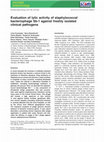
Microbial Biotechnology, 2011
In recent decades the increase in antibiotic-resistant bacterial strains has become a serious thr... more In recent decades the increase in antibiotic-resistant bacterial strains has become a serious threat to the treatment of infectious diseases. Drug resistance of Staphylococcus aureus has become a major problem in hospitals of many countries, including developed ones. Today the interest in alternative remedies to antibiotics, including bacteriophage treatment, is gaining new ground. Here, we describe the staphylococcal bacteriophage Sb-1-a key component of therapeutic phage preparation that was successfully used against staphylococcal infections during many years in the Former Soviet Union. This phage still reveals a high spectrum of lytic activity in vitro against freshly isolated, genetically different clinical samples (including methicillin-resistant S. aureus) obtained from the local hospitals, as well as the clinics from different geographical areas. The sequence analyses of phage genome showed absence of bacterial virulence genes. A case report describes a promising clinical response after phage application in patient with cystic fibrosis and indicates the efficacy of usage of Sb-1 phage against various staphylococcal infections.
European Biophysics Journal, 2005
BMC Genomics, 2018
Background: In the present study, we sequenced the complete genomes of three novel bacteriophages... more Background: In the present study, we sequenced the complete genomes of three novel bacteriophages v_B-Bak1, v_B-Bak6, v_B-Bak10 previously isolated from historical anthrax burial sites in the South Caucasus country of Georgia. We report here major trends in the molecular evolution of these phages, which we designate as "Basilisk-Like-Phages" (BLPs), and illustrate patterns in their evolution, genomic plasticity and core genome architecture. Results: Comparative whole genome sequence analysis revealed a close evolutionary relationship between our phages and two unclassified Bacillus cereus group phages, phage Basilisk, a broad host range phage (Grose JH et al.,
Uploads
Papers by Mzia Kutateladze